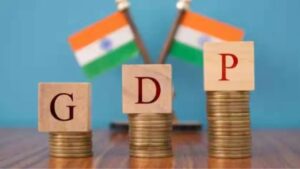The repo rate and reverse repo rate are two critical tools employed by the Reserve Bank of India (RBI) to manage inflation, stabilize the economy, and ensure financial stability. These rates influence the cost of borrowing for commercial banks, which in turn impacts interest rates, money supply, and overall economic activity. Through adjustments in these rates, the RBI can regulate liquidity and influence the flow of funds within the financial system, making them key elements of India’s monetary policy framework.
Repo Rate
Definition
- The repo rate is the rate at which the central bank lends money to commercial banks for short-term periods.
- The banks offer government securities as collateral for these loans.
Mechanism
- Borrowing Phase: Commercial banks, facing liquidity shortages, borrow money from the RBI against government securities.
- Repurchase Phase: The banks repay the loan, buying back the securities at a higher price, which reflects the interest charged by the RBI.
Objectives
- Control Money Supply: A reduction in the repo rate makes borrowing cheaper for banks, increasing liquidity and stimulating economic activity.
- Control Inflation: A higher repo rate discourages borrowing, reducing spending and controlling inflation.
- Financial Stability: The repo rate helps provide liquidity in times of financial stress, ensuring the stability of the financial system.
Impact
- Interest Rates: The repo rate directly affects lending and deposit rates offered by commercial banks.
- Investment and Consumption: Lower repo rates encourage borrowing for investments and consumption.
- Exchange Rates: Repo rate changes influence capital flows, affecting the value of the domestic currency.
Reverse Repo Rate
Definition
- The reverse repo rate is the interest rate at which the RBI borrows money from commercial banks for short-term periods.
- It is essentially the reverse of the repo rate.
Mechanism
- Lending Phase: Commercial banks lend surplus funds to the RBI.
- Borrowing Phase: The RBI pays interest to the commercial banks and repays the borrowed funds at the end of the agreed period.
Objectives
- Liquidity Management: The reverse repo rate helps manage excess liquidity in the market by incentivizing banks to park surplus funds with the RBI.
- Control Money Supply: By raising the reverse repo rate, the RBI can reduce money circulation, controlling inflationary pressures.
- Financial Stability: It provides a secure place for banks to park funds during periods of high liquidity.
Impact
- Interest Rates: The reverse repo rate influences short-term interest rates and money market instruments like Treasury bills.
- Monetary Policy Transmission: Changes in the reverse repo rate help the central bank transmit its monetary policy decisions to the broader financial system.
Difference Between Repo and Reverse Repo
| Parameter | Repo Rate | Reverse Repo Rate |
| Definition | Interest rate at which RBI lends to commercial banks | Interest rate at which RBI borrows from commercial banks |
| Role | RBI acts as the lender | RBI acts as the borrower |
| Parties Involved | RBI (lender) and commercial banks (borrower) | RBI (borrower) and commercial banks (lender) |
| Purpose | Control money supply, manage inflation, influence borrowing costs | Manage excess liquidity, absorb surplus funds from banks |
| Impact on Economy | Lowers repo rate to encourage borrowing, raises it to discourage borrowing | High reverse repo rate reduces liquidity, increases lending rates |
| Interest Earnings | RBI earns interest on loans provided to banks | RBI pays interest on funds borrowed from banks |
| Role in Financial Markets | Provides liquidity during financial stress | Absorbs excess liquidity from the market |
| Role in Monetary Policy | Expansionary tool to stimulate economic activity | Contractionary tool to absorb excess liquidity and control inflation |









 Net FDI Inflows Fell 98% in May 2025 – R...
Net FDI Inflows Fell 98% in May 2025 – R...
 Fastest-Growing Economy in the World? In...
Fastest-Growing Economy in the World? In...
 India Ratings & Research Cuts India’...
India Ratings & Research Cuts India’...

